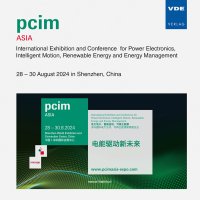Study on Microstructure and Mechanical Properties of IGBT Module Bonding Interface after Multiple Reflowing
Conference: PCIM Asia 2024 - International Exhibition and Conference for Power Electronics, Intelligent Motion, Renewable Energy and Energy Management
08/28/2024 - 08/30/2024 at Shenzhen, China
doi:10.30420/566414026
Proceedings: PCIM Asia 2024
Pages: 5Language: englishTyp: PDF
Authors:
Zhang, Xiankun; Pan, Xiaofei; Zhang, Xiaodong; Liu, Yuancheng; Chen, Bin; Ren, Aoao
Abstract:
In this paper, the growth and morphology of intermetallic compound(IMC) at Die /Solder A/DBC, Mo/Solder A /Die and Mo/Solder A/DBC interfaces under different reflow times were studied. The shear strength and fracture mode of bonding interfaces under different reflow times was also studied. The resulted show that the thickness of IMC increases with the increase of reflow times, and the increasing rate of IMC thickness decreases with the increase of reflow times. The shear strength of Mo/Solder A/Die interface first increases and then decreases with the increase of reflow times. With the increase of reflow times, the fracture mode of bonding interface changed from ductile fracture which occurred at Sn matrix to mixed fracture mode which occurred Sn matrix and IMC. The Mo/Solder A/DBC interface after primary reflow is a mixed fracture mode which occurred at Cu6Sn5 phase, (Cu, Ni)6Sn5 phase and Sn matrix, and brittle fracture is the main fracture mode. After secondary reflow, the bonding interface is changed to brittle fracture which occurred at Cu6Sn5 phase and (Cu, Ni)6Sn5 phase.


